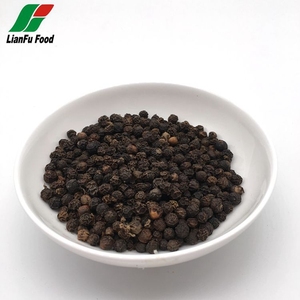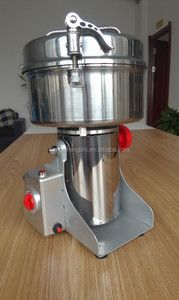
All categories
Featured selections
Trade Assurance
Buyer Central
Help Center
Get the app
Become a supplier

(6219 products available)





















































pepper flour grind are essential kitchen tools that serve a vital role in the preparation of various food items. These devices, designed to grind, crush, or mill ingredients, offer versatility and efficiency in culinary tasks. Whether you are dealing with spices, grains, or coffee beans, pepper flour grind can enhance the texture and flavor of your dishes. Available in different materials and mechanisms, these tools cater to diverse preferences and requirements in home and commercial kitchens. As technology advances, pepper flour grind continue to evolve, offering innovative features and improved performance to meet the demands of modern cooking.
The variety of pepper flour grind available on the market is vast, catering to different culinary needs. Manual mills, electric mills, and hybrid mills are the primary categories. Manual mills rely on human effort, offering a traditional approach to grinding, suitable for small quantities and personal use. Electric mills, powered by electricity, provide convenience and efficiency, ideal for larger quantities and frequent use. Hybrid mills combine manual and electric features, allowing users to switch between modes as needed. Each type of pepper flour grind is engineered to deliver optimal performance based on its intended use, ensuring versatility across different kitchen tasks.
pepper flour grind boast various functionalities and features that make them indispensable in kitchens. The primary function is to transform ingredients into finer particles, enhancing the texture and flavor of dishes. Features such as adjustable settings, ergonomic designs, and durable materials contribute to their usability and longevity. Adjustable settings allow users to control the fineness of the grind, catering to specific culinary preferences. Ergonomic designs ensure comfort during use, while durable materials such as stainless steel and ceramic guarantee longevity and resistance to wear. The efficiency of pepper flour grind in processing ingredients not only saves time but also enhances the culinary experience.
The construction of pepper flour grind involves a variety of materials, each chosen for its specific properties. Common materials include stainless steel, ceramic, and plastic. Stainless steel is favored for its durability and resistance to corrosion, making it ideal for long-term use. Ceramic offers a non-reactive surface, preserving the flavor and aroma of ingredients, while plastic provides lightweight and cost-effective options for casual use. The choice of materials impacts the performance and longevity of pepper flour grind, ensuring they meet the demands of different culinary tasks. Understanding the properties of these materials helps in selecting the right tool for specific ingredients and uses.
Using pepper flour grind effectively involves understanding their capabilities and maximizing their benefits. For optimal use, select the appropriate type and material based on the nature of the ingredients. Ensure that the device is not overloaded to prevent malfunction and maintain its grinding efficiency. Utilize adjustable settings to achieve the desired texture and consistency of the ingredients. Regular cleaning and maintenance of pepper flour grind are crucial to extend their lifespan and ensure hygienic use. Familiarizing yourself with the operational instructions and safety precautions can significantly enhance the effectiveness and safety of these tools in culinary applications.
Choosing the appropriate pepper flour grind for your kitchen involves a careful consideration of several factors. Firstly, you should evaluate the type and frequency of use. If you often prepare dishes requiring finely ground spices or grains, investing in a high-quality electric mill might be beneficial. On the other hand, if you occasionally grind small quantities, a manual mill could suffice. Another crucial aspect is the material of the pepper flour grind. Stainless steel models are known for their durability and resistance to corrosion, while ceramic options offer a non-reactive surface that preserves the flavor and aroma of ingredients. Understanding your culinary needs and preferences will guide you in selecting the most suitable pepper flour grind for your kitchen.
When purchasing pepper flour grind, consider the features that will enhance your culinary experience. Adjustable settings are paramount, allowing you to control the fineness of the grind to suit specific recipes. An ergonomic design can significantly improve comfort during use, especially for manual mills. Look for models with durable construction, as this will ensure longevity and consistent performance. Some pepper flour grind come with innovative features like automatic shut-off or programmable settings, adding convenience and efficiency to your kitchen tasks. By focusing on these features, you can find a pepper flour grind that meets your needs and enhances your cooking endeavors.
As sustainability becomes a priority, consider the environmental impact of your chosen pepper flour grind. Opt for models made from eco-friendly materials or those designed with energy-efficient technologies. Some manufacturers offer pepper flour grind with components that are recyclable or biodegradable, reducing their environmental footprint. Additionally, the longevity of a durable pepper flour grind can minimize waste by reducing the frequency of replacement. Understanding the sustainability aspects of the pepper flour grind can help you make an informed choice that aligns with eco-friendly practices.
Electric pepper flour grind offer several advantages over manual ones, including greater efficiency and convenience. They are ideal for grinding larger quantities quickly and with minimal effort. Electric mills often come with adjustable settings for precision grinding and can handle tougher ingredients with ease. For frequent use, electric pepper flour grind can save time and energy, making them a practical choice for busy kitchens.
Regular maintenance of your pepper flour grind is key to extending its lifespan. Clean the mill thoroughly after each use to prevent residue buildup, which can affect performance. For electric models, ensure the motor and electrical components are free from moisture and debris. Manual mills should be checked for wear and tear, especially in the grinding mechanism. Routine maintenance will ensure your pepper flour grind remains efficient and reliable over time.
The choice between ceramic and stainless steel pepper flour grind depends on your specific needs. Ceramic mills offer a non-reactive surface, which is ideal for preserving the natural flavor and aroma of ingredients. They are also resistant to rust and corrosion. Stainless steel mills, however, are known for their durability and robustness, making them suitable for heavy-duty use. Consider the type of ingredients you frequently grind and your preference for material properties when choosing between these options.
Yes, many pepper flour grind are versatile enough to grind coffee beans effectively. However, it's important to choose a model with the right settings for coffee beans to achieve the desired grind consistency. Some mills are specifically designed for coffee, offering features like adjustable coarseness and specialized burrs for optimal grinding. Ensure your chosen pepper flour grind is suitable for coffee beans to enjoy fresh, aromatic coffee at home.
When selecting a pepper flour grind for spices, consider the fineness of the grind and the material of the mill. Spices often require a fine grind to release their full flavor, so adjustable settings are crucial. Additionally, choose a material that does not react with spices, such as ceramic or stainless steel, to maintain the integrity of the flavors. A well-designed pepper flour grind will enhance your culinary creations by providing freshly ground spices that elevate your dishes.